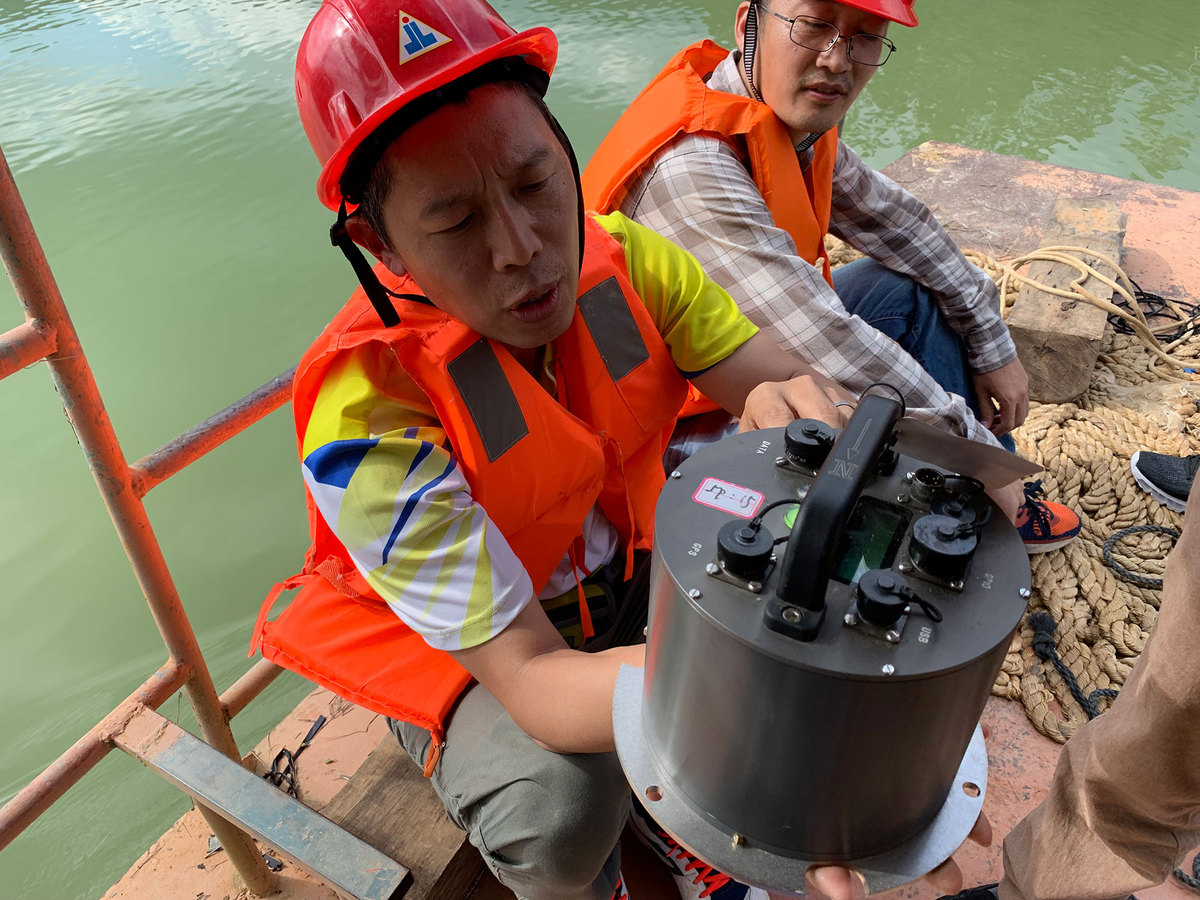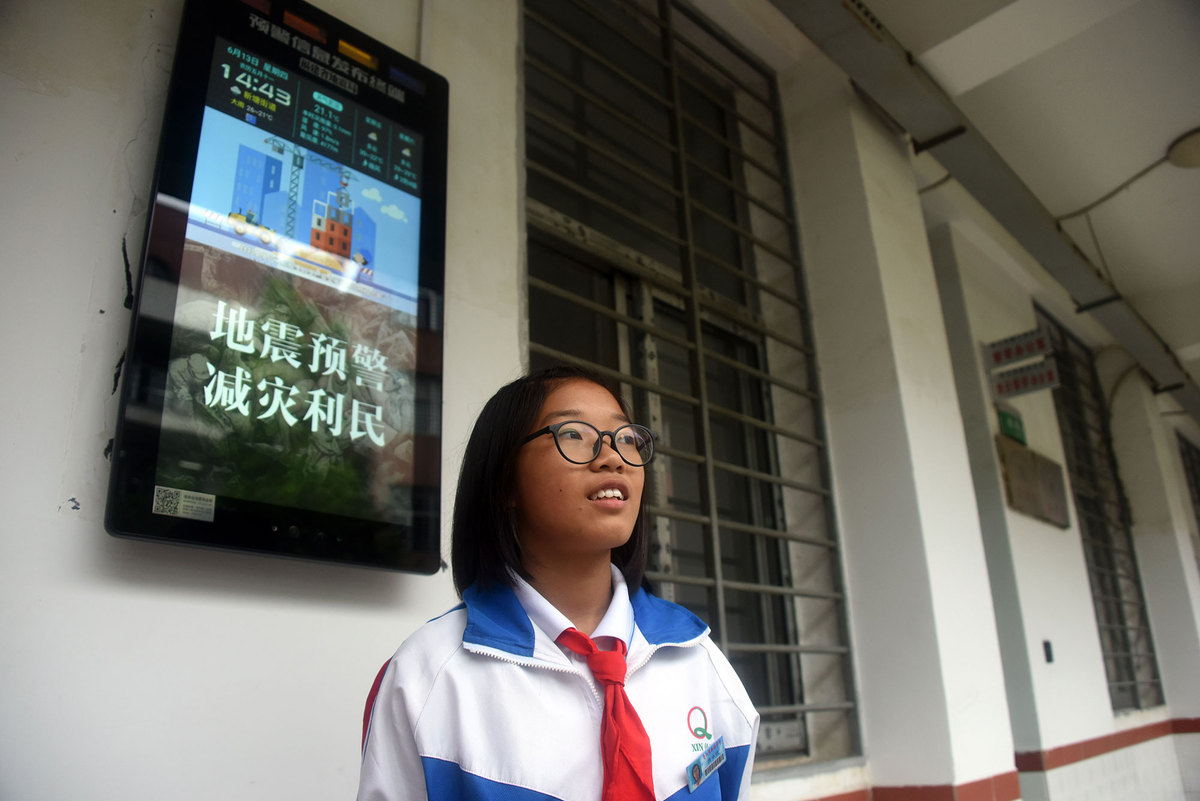
From the People's Daily App.
This is Story in the Story.
China has completed the world's first extremely low frequency, high power electromagnetic wave transmitter for earthquake prediction and exploration of underground mineral, oil and gas resources, said experts in the field.
The electromagnetic transmitter can detect low frequency electromagnetic signals in a radius of thousands of kilometers and from a depth of 10 kilometers.
With stronger and clearer signals, the areas probed by the electromagnetic wave transmitter can cover all of China's territory and territorial waters, researchers said.
Previous electromagnetic wave detectors worked only at a radius of several dozen kilometers, reports said.
China has become the third country in the world, following Japan and Mexico, to provide earthquake early warning services to the public.
Today’s Story in the Story looks at the development of seismic sensors in monitoring stations that detect the waves that emerge from an earthquake before the temblor begins

A Fujian Earthquake Agency employee checks a seismometer, which detects ground vibrations. (Photo: China Daily)
Chinese netizens hailed China's earthquake early warning technology for sending out alerts to the public seconds before a 4.5 magnitude earthquake hit Tangshan, North China's Hebei Province in December.
The Earthquake Early Warning (EEW) System developed by Sichuan-based Institute of Care-life alerted Tangshan residents two seconds and nearby Tianjin residents 11 seconds before the arrival of the seismic waves, said Wang Tun, head of the institute.
Wang said his institute and Beijing Kuyun Interactive Technology jointly developed the TV earthquake warning function, and the latter installed an artificial intelligence software module to smart televisions and outdoor screens that allow them to provide text and audio earthquake alerts.
Early warning messages were also available on cell phones, early warning terminals installed in schools and other public places as well as social media.
The EEW system, the biggest earthquake early warning system in the world, covered 2.2 million square kilometers and over 600 million people in China, about 90 percent of the Chinese population that could be affected by the earthquake.

A student relays the information she has read on the earthquake early warning terminal at Xinqiao Middle school in Jinjiang, Fujian province, earlier this month. The terminal was provided by the Fujian Earthquake Agency. (Photo: China Daily)
China’s new electromagnetic wave detector can penetrate thicker stratum and deeper in the seabed to predict earthquakes and explore strata structures, underground resources and resources at the bottom of the sea, noted the project manager, surnamed Guo from the 7th research institute of China State Shipbuilding Corp, adding "The achievement of the project has significant strategic benefits."
As part of China's Major National Science and Technology Infrastructure Program as detailed in the country's 11th Five-Year Plan period (2006-10), the project was carried out without reference to foreign projects. "No similar device yet exists in the world," Guo said.
The transmitter and China's first seismometer that can receive extremely low frequency electromagnetic signals, sent by both artificial and natural sources, has been built around the Chinese capital area and seismic belt regions.
The collaboration between the transmitter and the seismometer will help make a number of breakthroughs in exploratory scientific experimental researches such as earthquake prediction and exploration of underground mineral, oil and gas resources and the continental shelf, Guo said.
It was not the first time that the EEW system successfully sent out alerts to the public. The system provided residents in Southwest China's Sichuan Province life-saving seconds to escape from a 6.0-magnitude earthquake last July.
After the devastating 2008 earthquake in Wenchuan, Sichuan, which killed nearly 70,000 people, China began paying more attention to early warning technology for earthquakes. In August of the same year, the China Earthquake Administration submitted a national science and technology support program for early warning measures.
Since then, the FJEA has also played an important role in China's early warning program.
The program, whose lead expert is a member of the FJEA, studies the key practical technology of seismic intensity rapid reporting, and earthquake early warnings are produced with strong support from the agency.
"Southwest China has the highest frequency of earthquakes, but Fujian (on the southeast coast) is also at high potential risk from such disasters. There are many epicenters in the Taiwan Straits that threaten us, and Fujian has suffered many earthquakes throughout history," said Wang Qingping, chief designer at the FJEA's Emergency Command and Publicity Center.
Fujian has the most advanced and widely distributed monitoring stations in China. By 2020, we will have more than 1,300 different types of monitoring stations across the province, which means one will be sited every 10 kilometers," Wang said.
(Produced by Nancy Yan Xu, Brian Lowe, Lance Crayon and Paris Yelu Xu. Music by: bensound.com. Text from Global Times, China Daily)


